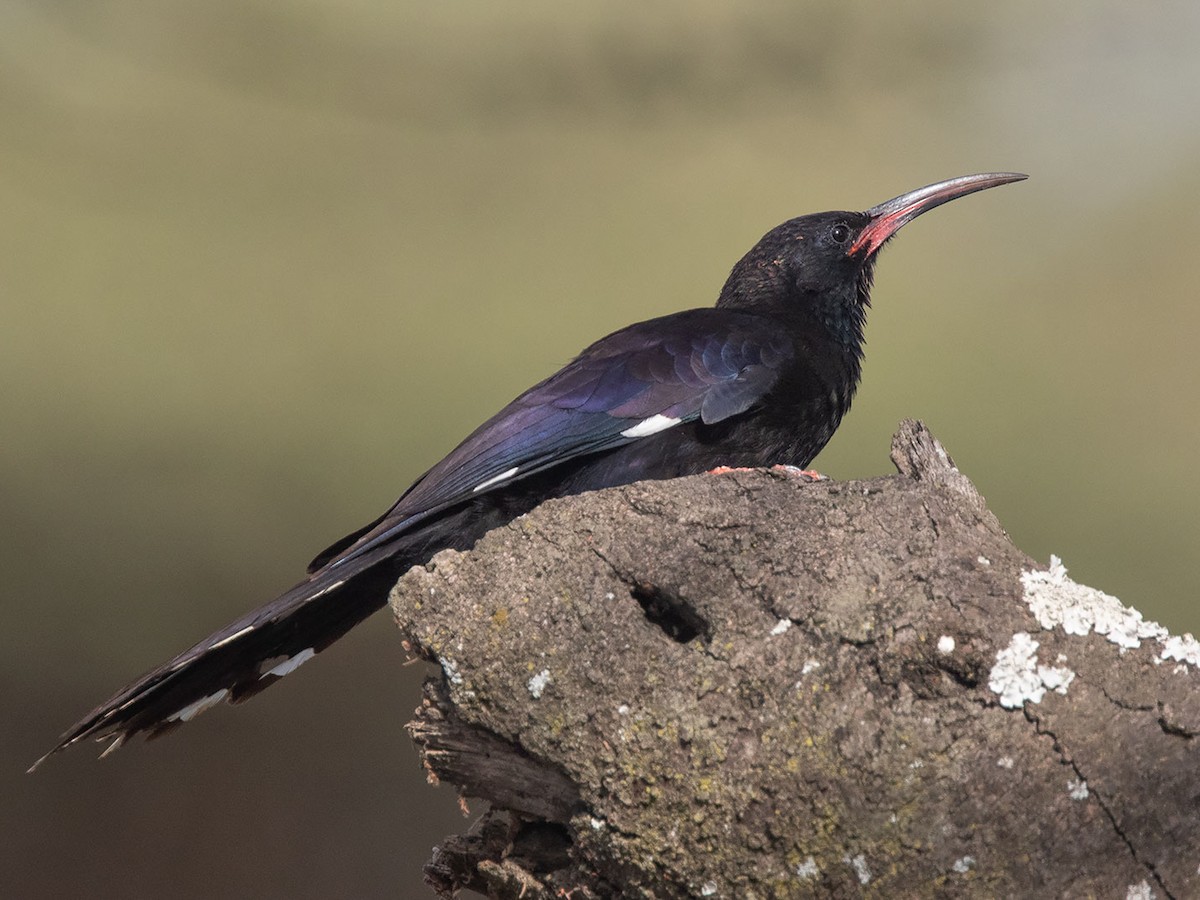
Black Billed Wood Hoopoe
Black Billed Wood Hoopoe
The Enigmatic Black-Billed Wood Hoopoe: A Deep Dive into Its Habitat, Behavior, and Conservation
The Black-billed Wood Hoopoe, scientifically known as Phoeniculus somaliensis, is a captivating bird species that thrives in the arid and semi-arid landscapes of East Africa. With its shimmering plumage, distinctive vocalizations, and complex social behaviors, this bird is a marvel of avian evolution. In this comprehensive guide, we’ll explore the Black-billed Wood Hoopoe’s ecology, behavior, and the conservation efforts aimed at preserving its dwindling habitats.
Introduction to the Black-Billed Wood Hoopoe
The Black-billed Wood Hoopoe is part of the Phoeniculidae family, a group of birds known for their elongated bills and iridescent feathers. Unlike its more flamboyant cousin, the Green Wood Hoopoe, this species is distinguished by its solid black bill, a feature that gives it its name.
Often found in small, noisy flocks, the Black-billed Wood Hoopoe is a highly social bird that exhibits cooperative breeding and intricate vocalizations. Its presence in the ecosystem is vital, serving as both predator and prey in its native environment.
Taxonomy and Classification
Understanding the taxonomic placement of the Black-billed Wood Hoopoe provides insight into its evolutionary lineage:
- Kingdom: Animalia
- Phylum: Chordata
- Class: Aves
- Order: Bucerotiformes
- Family: Phoeniculidae
- Genus: Phoeniculus
- Species: P. somaliensis
This bird was once considered a subspecies of the Green Wood Hoopoe, but recent genetic studies have confirmed its status as a distinct species.
Physical Characteristics
The Black-billed Wood Hoopoe is a visually striking bird with several unique features:
- Size: Approximately 38–42 cm in length, including a long, graduated tail.
- Plumage: Glossy, iridescent greenish-blue feathers that shimmer under sunlight.
- Bill: Slender, slightly decurved, and entirely black—unlike the red bill of other wood hoopoes.
- Tail: Long and white-tipped, often used for balance and display.
- Feet: Zygodactyl (two toes forward, two backward), ideal for gripping tree bark.
These features not only make the bird visually appealing but also serve functional purposes in its arboreal lifestyle.
Habitat and Geographic Distribution
The Black-billed Wood Hoopoe is endemic to the Horn of Africa, primarily found in:
- Somalia
- Ethiopia
- Northern Kenya
It inhabits dry savannas, thorn scrublands, and open woodlands, particularly areas with acacia trees. These habitats offer ample foraging opportunities and nesting sites.
Preferred Habitat Features:
- Dead or hollow trees for nesting
- Abundant insect life
- Sparse underbrush for easy movement
Its range is limited, making it susceptible to habitat degradation due to deforestation and climate change.
Feeding Habits and Diet
This species is an insectivore, feeding primarily on:
- Beetles
- Termites
- Ants
- Caterpillars
- Spiders
Using its slender bill, it probes into bark crevices, dead wood, and soil to extract prey. Occasionally, it supplements its diet with fruits and seeds.
Foraging Techniques:
- Probing: Inserting the bill into cracks and holes.
- Gleaning: Picking insects off surfaces.
- Group Foraging: Coordinated efforts to flush out prey.
Its feeding habits play a crucial role in controlling insect populations, contributing to ecological balance.
Breeding and Reproductive Behavior
The Black-billed Wood Hoopoe exhibits cooperative breeding, a rare trait among birds. In this system:
- Only the dominant pair breeds.
- Subordinate group members assist in feeding and protecting the young.
- Nests are built in tree cavities, often reused year after year.
Breeding Cycle:
- Breeding Season: Varies by region, often linked to rainfall.
- Clutch Size: 2–4 eggs
- Incubation: ~18 days
- Fledging: Chicks leave the nest after 30–35 days
This cooperative strategy increases the survival rate of the offspring and strengthens social bonds within the group.
Social Structure and Communication
Highly gregarious, the Black-billed Wood Hoopoe lives in flocks of up to 12 individuals. These groups are tightly knit and communicate through a variety of vocalizations and displays.
Vocalizations:
- Cackling Calls: Used for group cohesion.
- Alarm Calls: Warn of predators.
- Duets: Strengthen pair bonds.
Social Behaviors:
- Allopreening: Mutual grooming that reinforces social ties.
- Territorial Displays: Tail fanning and bill pointing to deter rivals.
Their vocal and visual communication systems are among the most complex in the avian world.
Threats and Conservation Status
Although not currently listed as endangered, the Black-billed Wood Hoopoe faces several threats:
- Habitat Loss: Due to logging, agriculture, and urban expansion.
- Climate Change: Alters rainfall patterns, affecting food availability.
- Human Disturbance: Nesting sites are often destroyed unintentionally.
Conservation Efforts:
- Habitat Protection: Establishing protected areas in East Africa.
- Research: Ongoing studies to monitor population trends.
- Community Education: Raising awareness among local populations.
According to the IUCN Red List, the species is currently categorized as Least Concern, but continued monitoring is essential.
Ecological Importance
The Black-billed Wood Hoopoe plays a vital role in its ecosystem:
- Pest Control: Keeps insect populations in check.
- Seed Dispersal: Occasionally aids in spreading plant species.
- Indicator Species: Its presence reflects the health of dry woodland habitats.
Protecting this bird ensures the preservation of a broader ecological network.
How to Spot the Black-Billed Wood Hoopoe
If you’re an avid birdwatcher or ecotourist in East Africa, spotting this bird can be a rewarding experience.
Tips for Identification:
- Look for iridescent plumage in dry woodlands.
- Listen for loud, cackling calls.
- Observe group behavior—they are rarely alone.
- Check tree cavities for nesting activity.
Best Times to Spot:
- Early mornings and late afternoons
- During or after the rainy season when insect activity is high
Bring binoculars and a field guide, and always respect the bird’s natural habitat.
FAQs
1. What distinguishes the Black-billed Wood Hoopoe from other wood hoopoes?
The primary distinguishing feature is its solid black bill, whereas other species like the Green Wood Hoopoe have red bills. It also has a more limited range and slightly different vocalizations.
2. Is the Black-billed Wood Hoopoe endangered?
Currently, it is listed as Least Concern by the IUCN, but habitat loss and climate change pose significant long-term threats.
3. What do Black-billed Wood Hoopoes eat?
They primarily consume insects such as beetles, termites, and ants, but will also eat spiders and occasionally fruits and seeds. Learn more about their diet.
4. Where can I see the Black-billed Wood Hoopoe in the wild?
You can find them in dry savannas and woodlands in Somalia, Ethiopia, and northern Kenya. Explore birding hotspots.
5. How do they communicate?
They use a variety of vocalizations, including cackles and duets, as well as visual displays like tail fanning. This complex communication helps maintain group cohesion. Read about avian communication.
Conclusion
The Black-billed Wood Hoopoe is more than just a beautiful bird—it’s a symbol of ecological balance and social complexity in the avian world. Its iridescent feathers, cooperative breeding, and intricate calls make it a subject of fascination for ornithologists and bird lovers alike. However, its future is uncertain without concerted conservation efforts.
By protecting its habitat and raising awareness, we can ensure that this unique species continues to thrive in the wild landscapes of East Africa. Whether you’re a researcher, a conservationist, or simply a curious observer, the story of the Black-billed Wood Hoopoe is one worth telling—and preserving.
